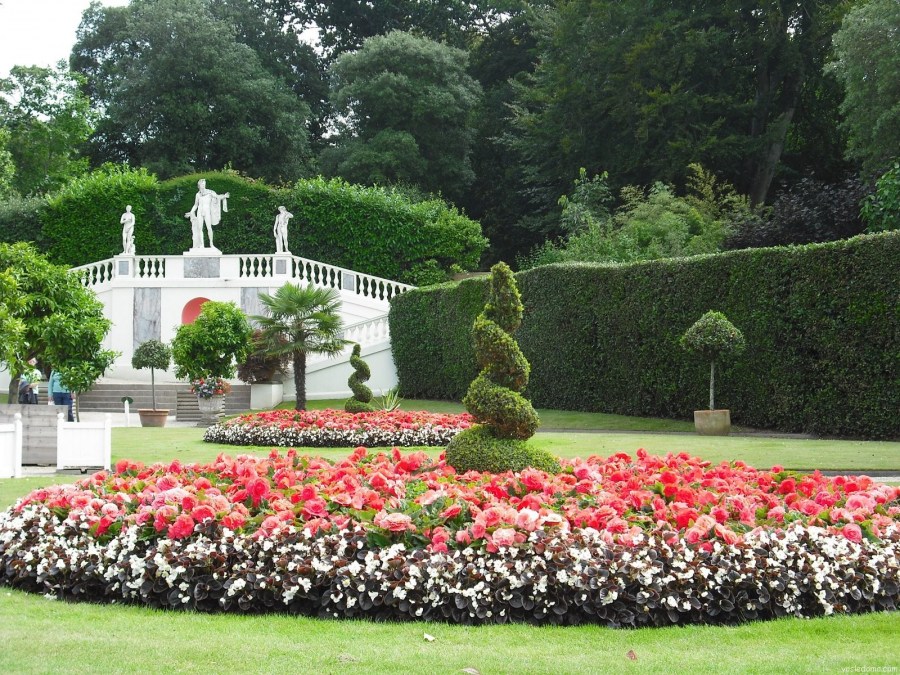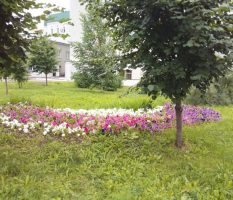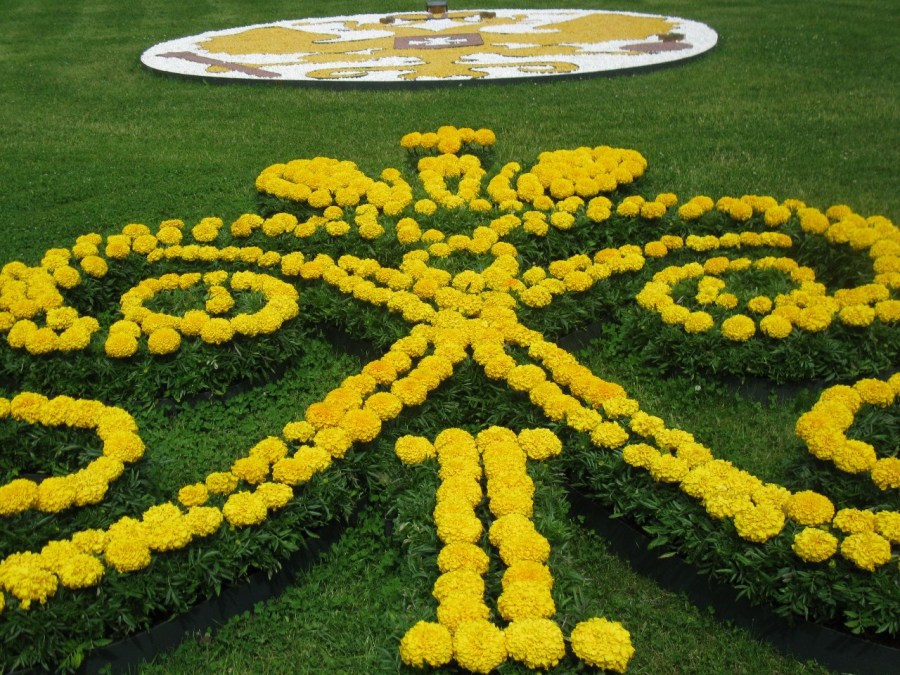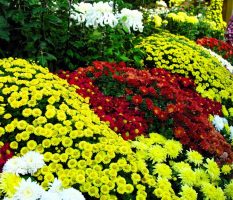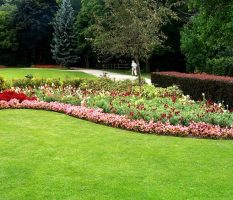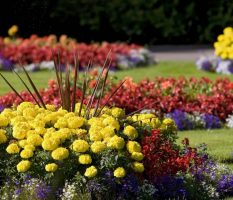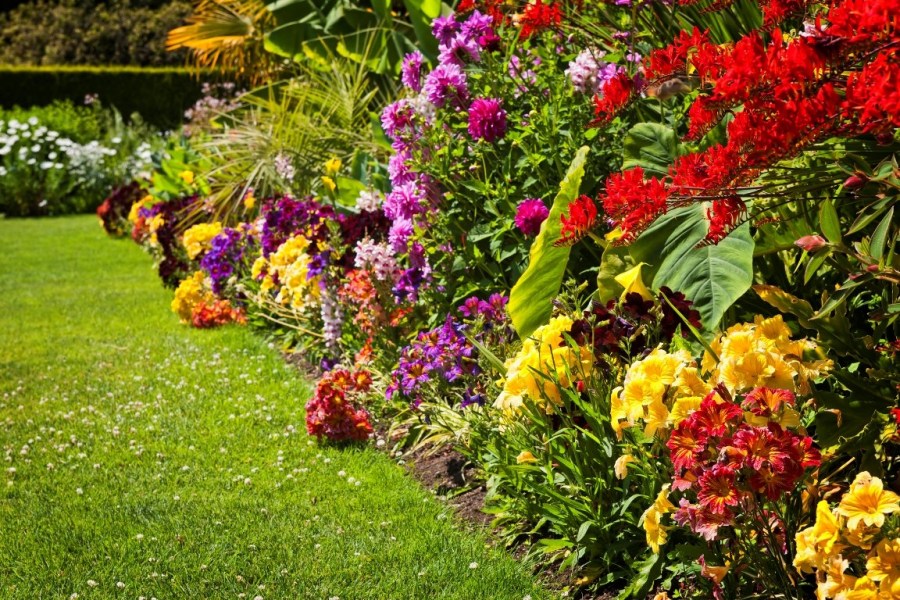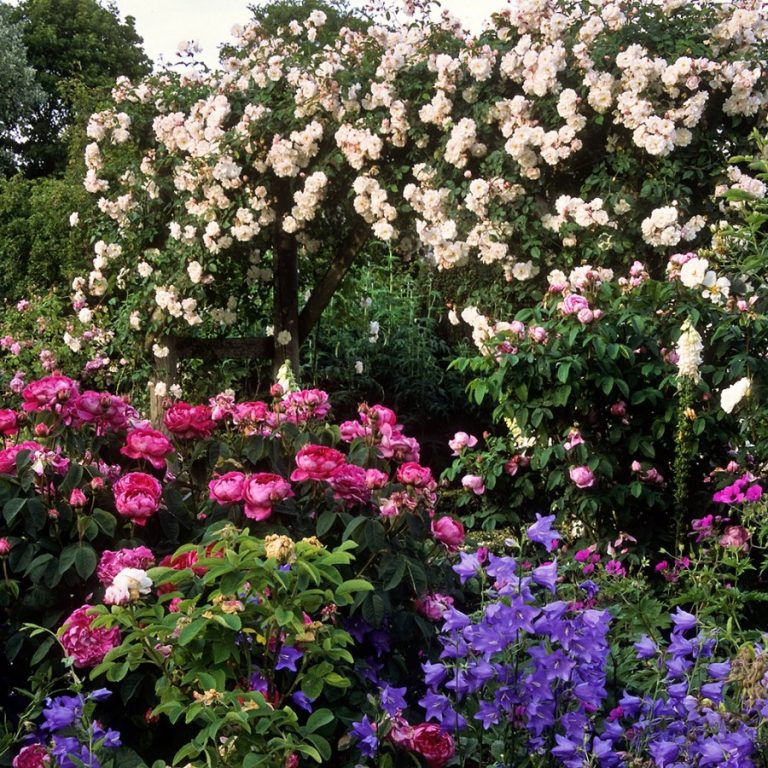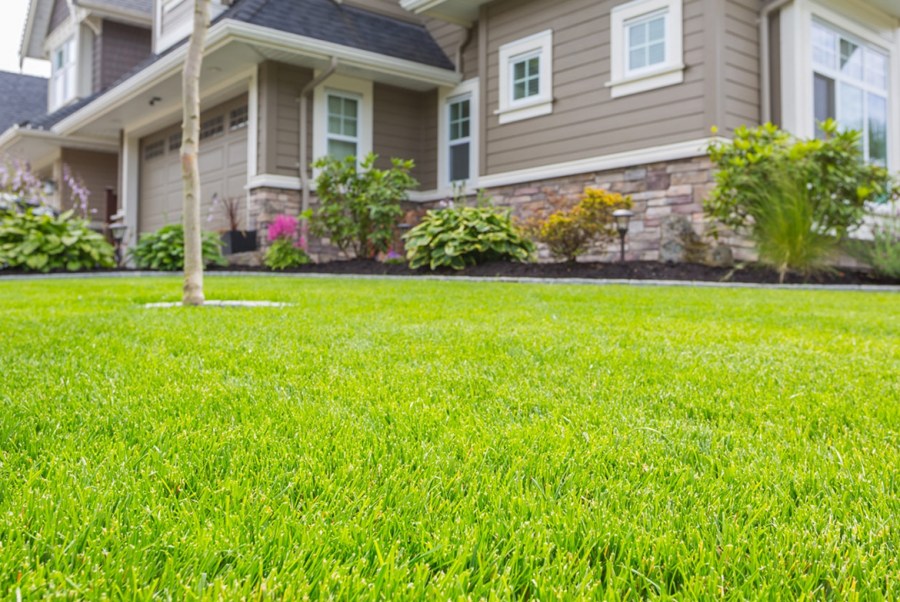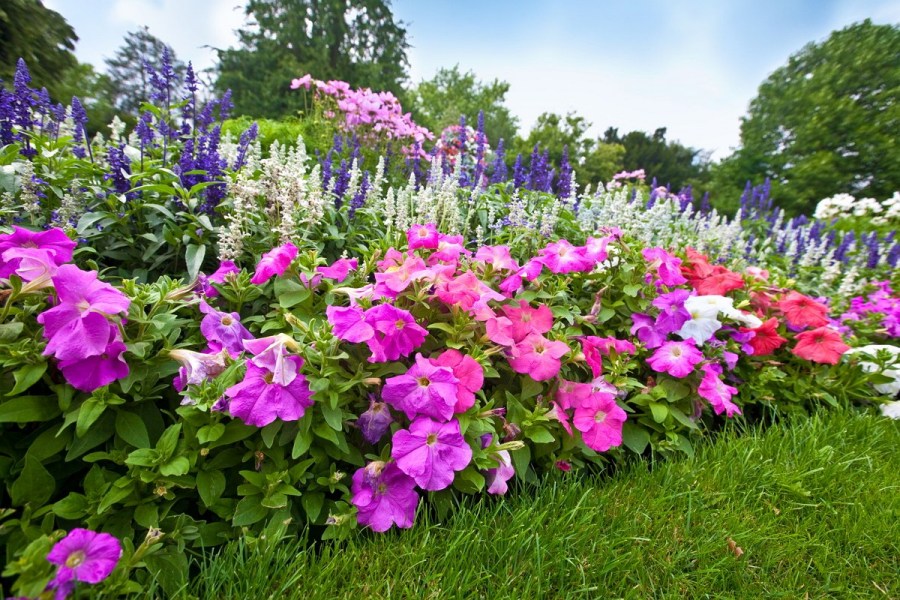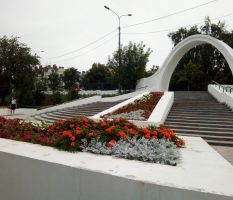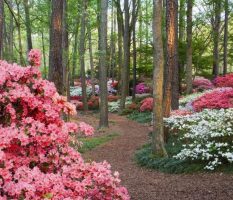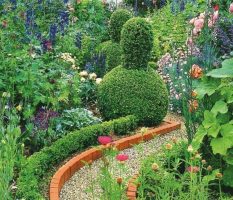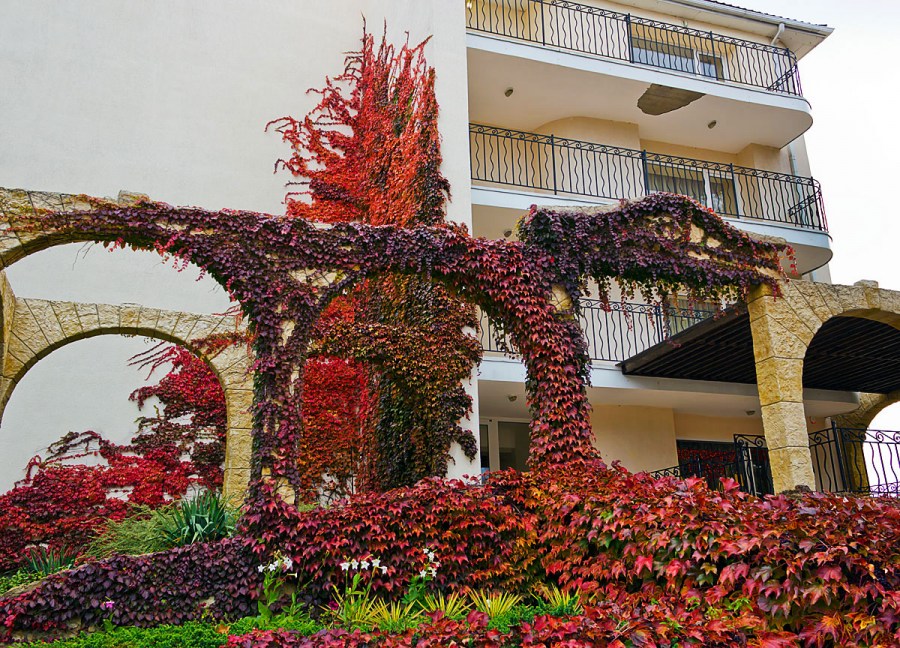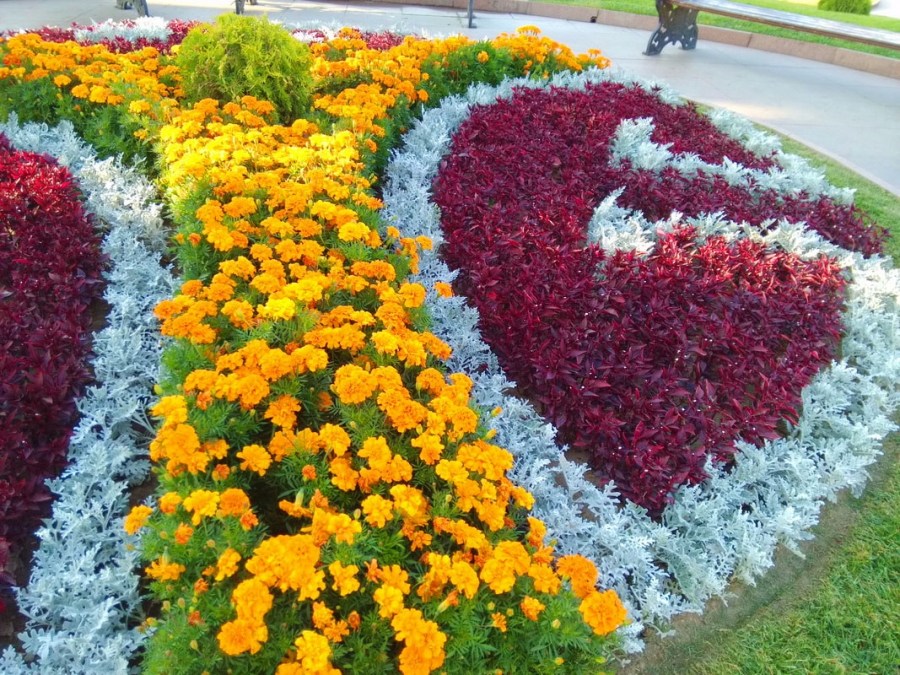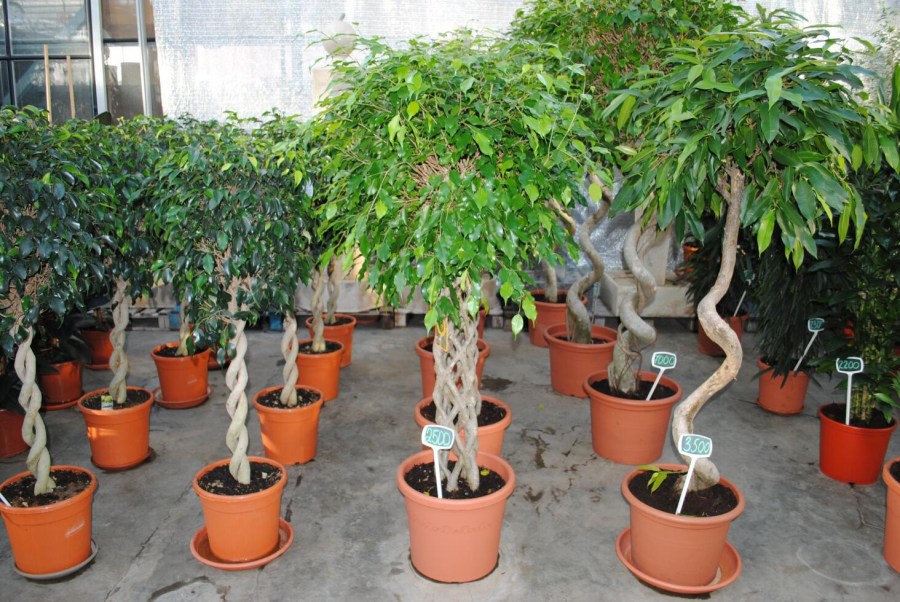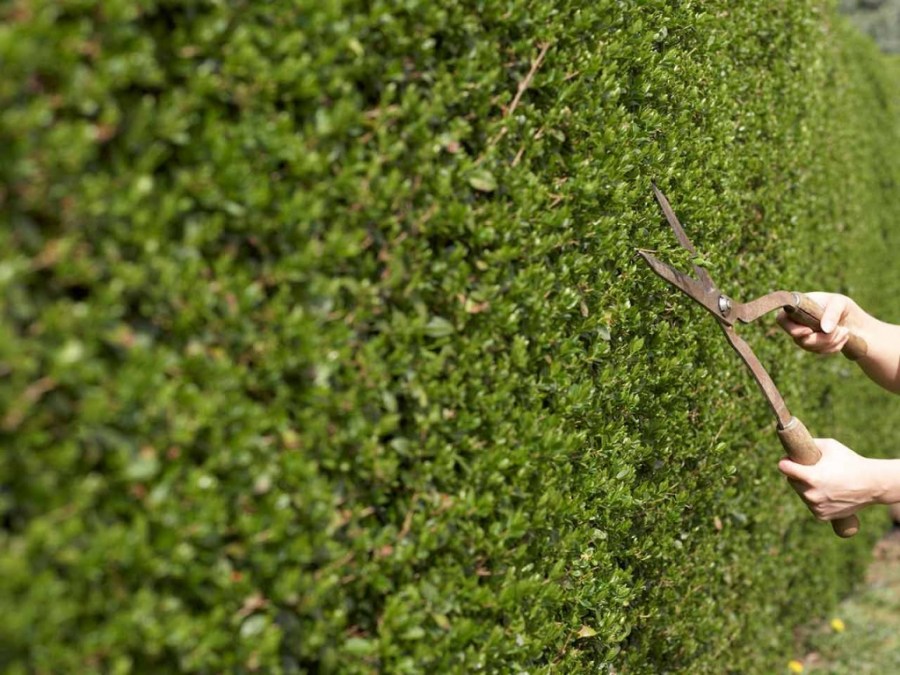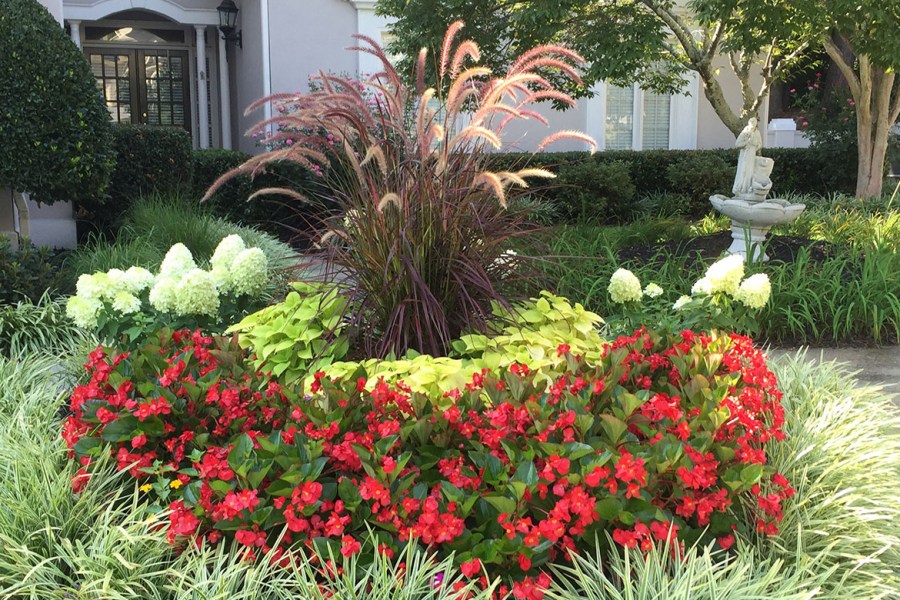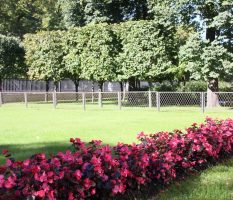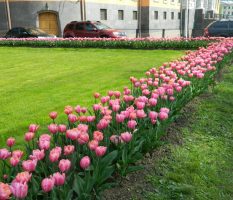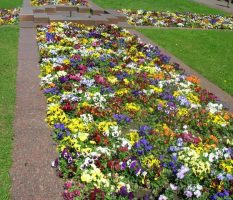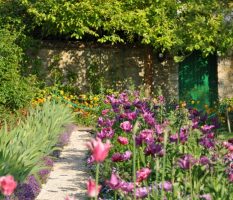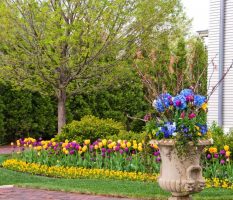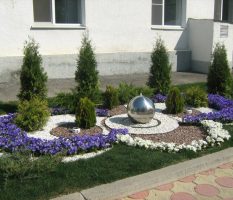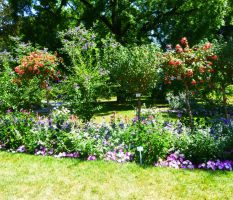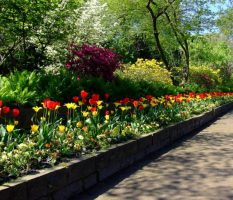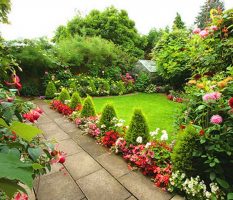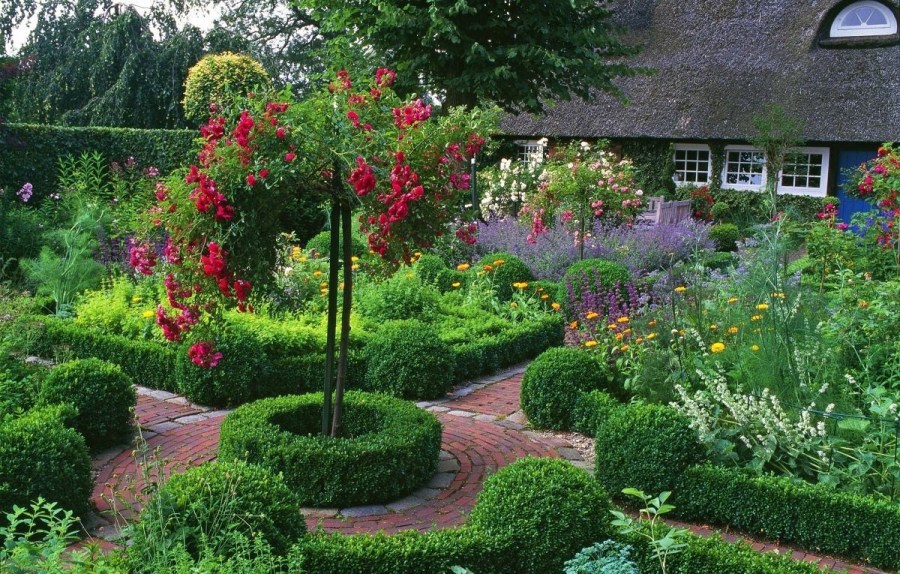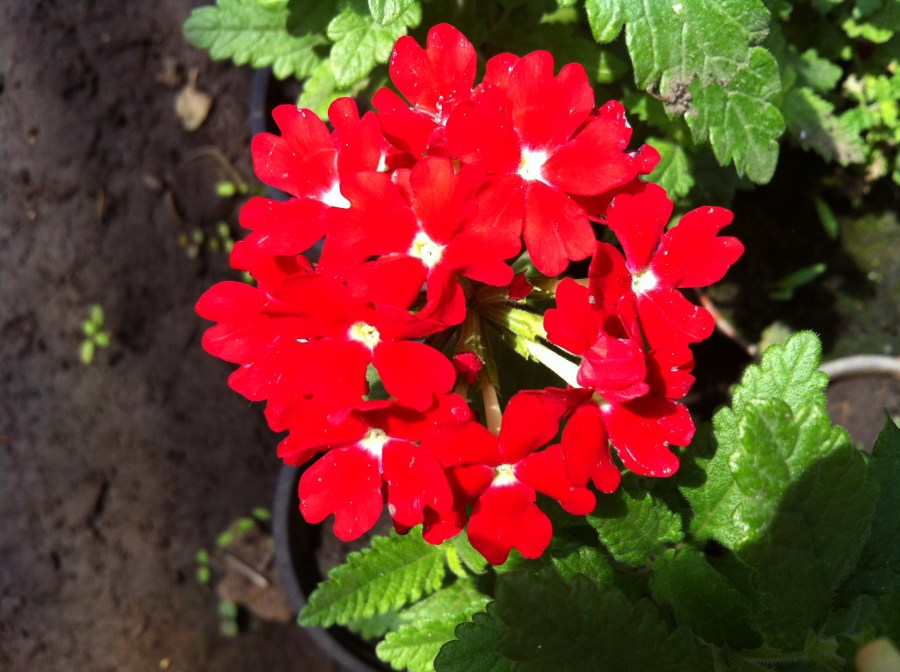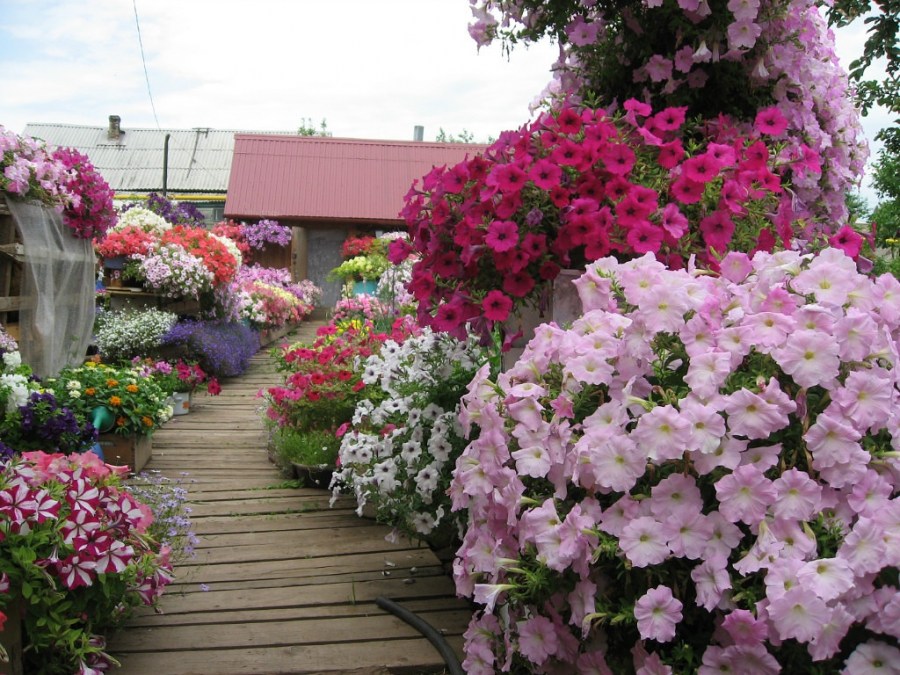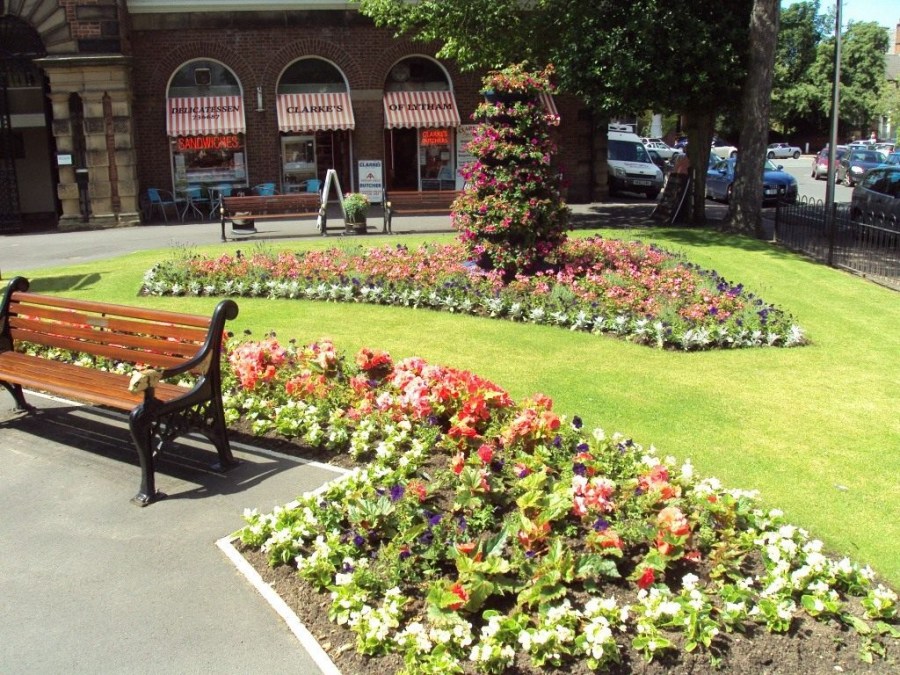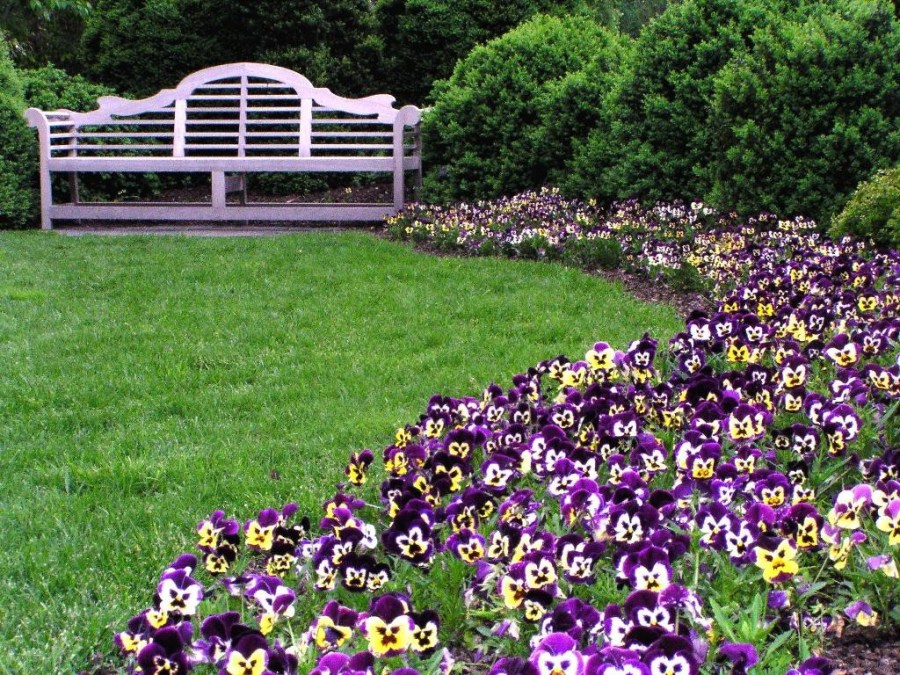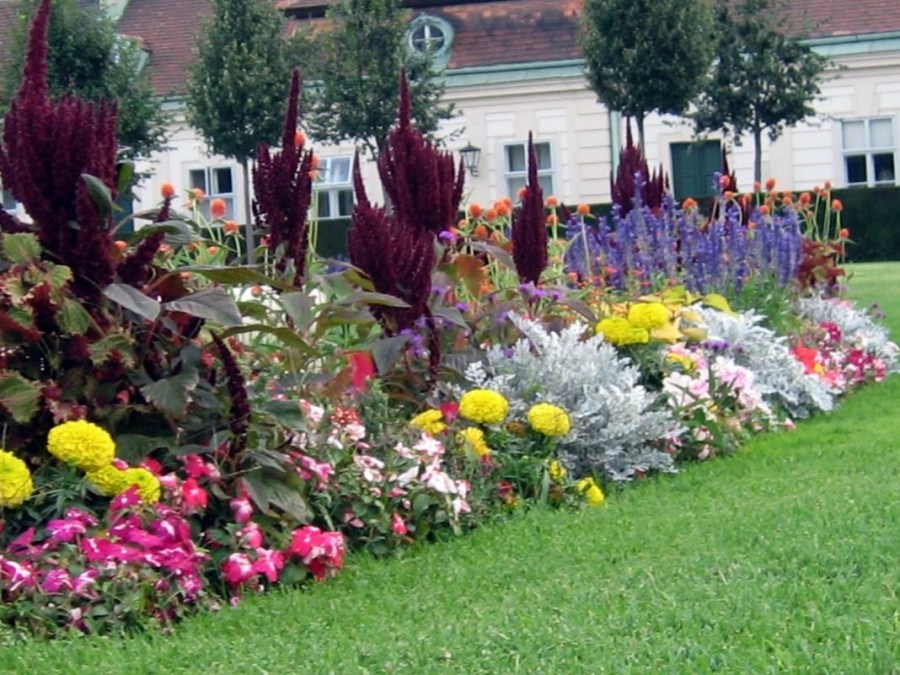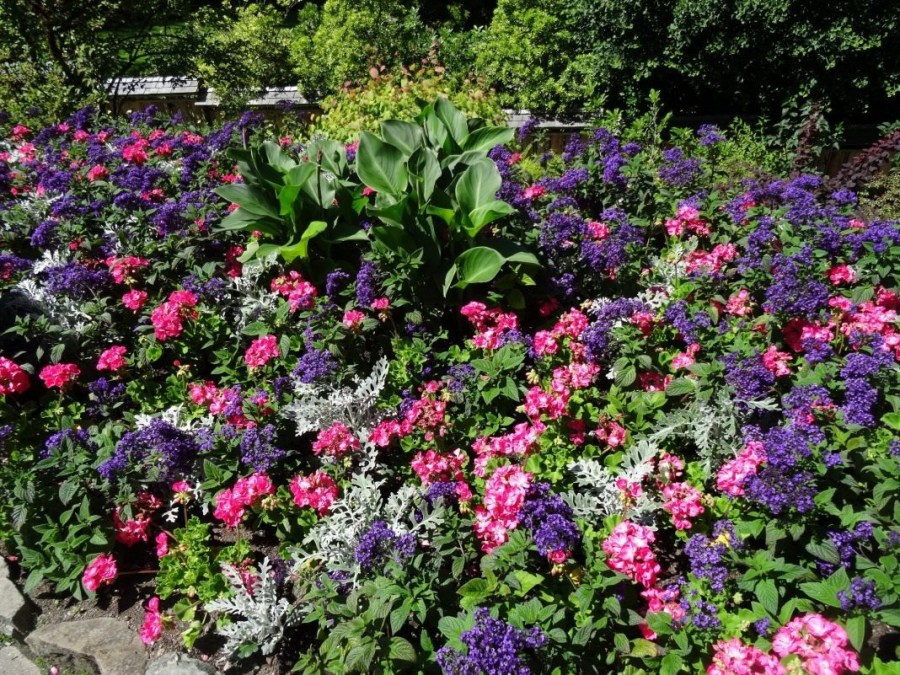Rabatka in landscape design - what is it and how to create it with your own hands (130 photos)
The design of a harmonious and distinctive flower garden is a whole art, which is comprehended either at special courses or through years of constant practice. However, there is also in flower breeding that even the most inexperienced and beginner gardener can do the design of rabatoks.
Under such a peculiar name lies a flowerbed that is simple in form and care, which anyone can break, knowing the rules and schemes.
Secrets of Rabatka
"Garden" - this is the translation from German of the name of this composition, which is characterized by a rectangular elongated shape, limited to 2 meters wide and about 15 meters long.
Typically, such flower beds are located along something: buildings, paths, front gardens or zoning the territory as a kind of dividers and delimiters.
We can distinguish several advantages of rabatka among other varieties of flower beds:
- Easy access to plants;
- Versatility, allowing you to fit it into any space;
- The clarity of the lines and the geometry of the color pattern;
- Symmetry and severity of form.
Schemes and options
Despite the obvious simplicity, rabatki are famous for their versatility, as they have species diversity. For example, you can choose a suitable bed for a particular method of planting plants and their varieties, location, color scheme and even composition.
So, you can choose a one-sided, two-sided or intermittent option. In the first case, the flowers are planted in length, while the highest are located along one side, and on the opposite edge are stunted.
If the discount is located on a plain or lawn, then bilateral planting is preferable, where long plants are placed in the center, and ground cover varieties occupy places on the sides.
Even more interesting is the intermittent composition, combining several segments combined with decorative elements or undersized bushes.
At the location, flower beds are built, built on the principles of symmetry and asymmetry. Asymmetry in this case is a single bed located along an object, and symmetry implies a more thoughtful flowerbed inscribed in the middle of the plot.
A large role in the flower bed, as in any flower arrangement, is played by plants, in terms of the use of which there is also a division into:
- Annuals, which are flower beds of annual flowers;
- Perennial rabbits, consisting of perennial flowers;
- Combined, combining both perennials and annuals;
- One-component involves planting only one plant variety, but different colors;
- Multicomponent - planting several varieties;
The design of flower beds according to the color scheme is also popular: one-, two-, multi-color, contrast and monochrome.
The scheme of the work is different in composition:
- One-tier, involving the use of plants of predominantly the same height;
- A two-tier combines two rows of varieties of different heights;
- Multi-tier - staircase composition with the explicit selection of three or more levels.
Step-by-step instruction
To make a discount yourself “like in the picture”, you don’t have to study tons of gardening literature or pay for special workshops. It will be quite simple to follow the steps of the step-by-step instructions below:
Choose a suitable place that will correspond to the desired shape of the future flowerbed, as well as meet the needs of plants planted on it (light, humidity, wind protection, terrain features, soil character, unimpeded watering and access).
Or, on the contrary, pushing away from the chosen place, choose the appropriate varieties.
Build a planting plan, determine what place each of the plants will occupy. To study photos of already issued rabatok, adopt ideas, get inspired.
Start construction: determine the dimensions, draw borders with the help of pegs, ropes or boards. Fill the space with prepared soil: loosen the soil, treat with a weed and pest agent, remove the top (ten centimeter) layer of earth after a few days, mix the resulting mass with fertilizers (peat, sand, trace elements, etc.), return to the garden bed, level, moisten and leave to shrink.
When constructing a multi-level composition, make appropriate embankments, mounds. In accordance with the plan to plant plants, remembering the indicative rules (4 high or 10 low per square meter).
Also do not forget about your imagination. For example, if the discount is located along a long path, then you can divide it into several "islands", sections, placing in each accent in the form of a tall bush of roses or peonies.
Suitable plants
The modern plant market is amazingly diverse, so it is sometimes difficult for a novice gardener to decide on the filling of flower beds. Among all varieties, the following types are most suitable for designing rabatka in the country:
- Tall dwarf spruce, peonies, roses, asters, marigolds, junipers;
- Medium irises, yarrow, lilies, lupins, snowdrops, astilbe, tulips, chrysanthemums, dahlias, daisies, phlox, crocuses.
- Low petunia, pansies, calendula, verbena, nasturtium, Japanese maple, stonecrop, saxifrage, creeping juniper and thuja.
Additional decoration
Also, one should not forget about the additional decoration of the rabatka, which will allow to give the composition integrity and harmony with the environment.
So, the fence laid out of stones or a miniature fence, combining with flowers of cobblestones, driftwood or garden tools (from a broken wooden cart, barrel to a gnome figurine) will not be superfluous in the garden. The smooth transition of a lushly growing flowerbed into a calm and even lawn looks very impressive.
A DIY handmade table is a simple, economical and effective way to make your garden even brighter and more attractive. The versatility of the composition, fitting into any relief, the ability to combine a flower bed with a track or any building make it indispensable in the design of a summer cottage.
The main thing is that such a "bed" does not require special skills in landscape design, because everyone can plant flowers on conditional lines, but the effect is first-class.
Photo rabatki
Design of a country house - 200 photos of the best ideas and worthy projects of private houses
Ways of warming a private house: a simple instruction for beginners with photos and videos
Pond Cleaning: 80 photos of proven pond treatment methods
Join the discussion:


